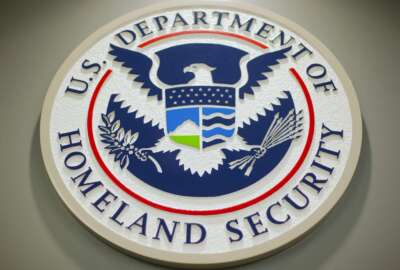[Ensuring the employee is supported and cared for] is extremely important in the federal space because, obviously, federal agencies can't outspend the private sector when it comes to talent acquisition. They actually have to elevate their experiences so that you're not making a sacrifice of quality of work life and quality of financial security to work for the federal government.
Kevin Brooks
Principal Digital Strategist, DoD & IC, ServiceNow
How do you connect and build culture through a digital platform when you have employees who are working through disparate locations? One way to do that is going to be senior leader engagement via technology, using Zoom or whatever platform you use for more than just meetings. It's really re-recruiting your talent. You have to make them feel a part of the mission or a part of the organization by raising the cultural bar through technology.
Kevin Brooks
Principal Digital Strategist, DoD & IC, ServiceNow
Over the last 20 months, every agency and every business has experienced major changes to their workplaces. We don’t have to tell you just how different your office is today than it was pre-pandemic.
The one thing agencies, and really all organizations, need to continually assess and address the well-being of employees.
The annual Federal Employee Viewpoint Survey (FEVS) found a 3.9-point increase in employee engagement scores last year. Employees collectively scored agencies 86.1 points for the support they received during the pandemic and their work units’ ability to deliver on missions.
Overall it was good news for the last few years. So as agencies move into fiscal 2022, they must find ways to improve their employee engagement scores as remote work, virtual meetings and the like remain the norm as employees work in a hybrid environment.
Researchers from the Partnership for Public Service and Boston Consulting Group found successful agencies have a culture of integration that helps employees build their skills and professional networks. Researchers also say having a defined career path and a connection to mentors helps create a successful relationship with the agency.
Underlying this is data and technology to help drive agencies toward the overall goal creating a healthy workplace.
Kevin Brooks, the principal digital strategist for DoD and US Intelligence Community at ServiceNow, said agencies need to recognize the need to do more to care and support their employees. He said this means ensuring the employee is supported and cared for across the continuum of their career through internal and external activities and resources.
“That’s extremely important in the federal space because, obviously, federal agencies can’t outspend the private sector when it comes to talent acquisition. They actually have to elevate their experiences so that you’re not making a sacrifice of quality of work life and quality of financial security to work for the federal government,” Brooks said on the Innovation in Government show sponsored by Carahsoft. “At least if you do that, you have the opportunity to play on people’s sense of duty and call to duty. The workplace experience really matters and technology can really help because it’ll help bridge that employee and that manager relationship, which is very critical. We finally started talking about how people don’t leave bad jobs they leave bad bosses.”
As the federal workforce continues to work in an hybrid environment for the foreseeable future, Brooks said creating that connection among employees, and especially the leadership, and ensuring that collaboration is secure and easy, are among the most important considerations to maintain and expand an organization.
“How do you connect and build culture through a digital platform when you have employees who are working through disparate locations?” he said. “One way to do that is going to be senior leader engagement via technology, using Zoom or whatever platform you use for more than just meetings. It’s really re-recruiting your talent. You have to make them feel a part of the mission or a part of the organization by raising the cultural bar through technology.”
Brooks said one approach to better connect with employees is through something called journey management where a supervisor and an employee use tools to help them navigate their career.
“It starts with onboarding and having a smoother onboarding process called a journey accelerator. It’s where the manager can create a customized role-based plan for each employee, which shows that personal touch and they can use that to organize activities and tasks to personalize that employee’s experience,” he said. “Then there is something called listening posts, where we capture their feedback in a more consistent manner. Rather than just having an annual employee survey, this listening post goes out every one once in a while within a periodic cycle and you’re able to get the employees feedback. We do same thing for learning posts where we can elevate that training environment for that individual employee experience and human resources can build a set of experiences for a particular work group.”
Brooks added that these small, but important efforts keep employees connected to their job and to the culture of the organization.
All of these efforts can be summed up around three common themes:
- Employee care and support, which is focused on making sure they feel supported and cared for across the continuum of their employment.
- Communication, which is focused on your organizational values, expectation and then enabling employees to participate in those discussions and those activities that help elevate the culture and then when things do go wrong ways either poor performance or something happens interpersonally between employees, how do you reduce those things?
- Accountability, which is how you address challenges that do come up.
“We’re at an inflection point. COVID drove the federal government to make some decisions faster. Things are probably coming, but they had to get there sooner. So now, don’t go back. We have an opportunity to actually keep the pedal down and go,” Brooks said. “You have two restive generations coming into the workforce. They’re going to have different expectations. You’ve got GenXers like us who think we’re technical, so we are willing to grow with it. As we rise to more senior levels, use us and use that the opportunity that COVID provided to actually elevate your transformation and keep going.”
Listen to the full show:
About ServiceNow

Citizens rely on government services daily. Today, agencies face rising demand, increased expectations, and constant scrutiny. Digital transformation isn’t easy when legacy technology and processes hold you back at every turn. But agencies everywhere are rising to the challenge.
With ServiceNow, government agencies empower the workforce and improve service delivery workflows, to deliver an excellent citizen experience—today and into the future. ServiceNow enables government agencies to empower their workforce and make work flow securely. With one platform, agencies can modernize their IT and processes for their workforce to deliver an excellent citizen experience.
Copyright
© 2025 Federal News Network. All rights reserved. This website is not intended for users located within the European Economic Area.










